INDUSTRY LINKS CASE STUDY
Project-based learning: Impact Projects
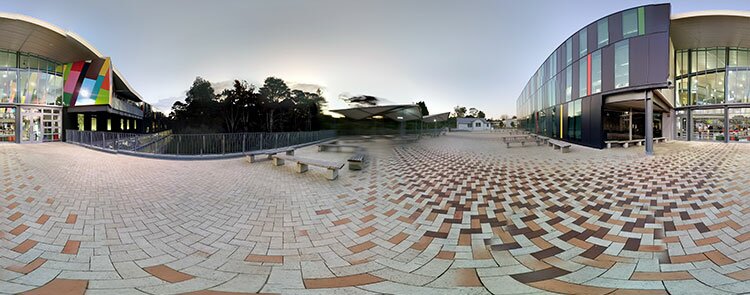
'A successful programme at Albany Senior High School involves students in exploring their interests and/or potential careers, with many working on technology-related projects. Students contribute to their local community – which presents a great opportunity for engineering employers and educators to raise awareness of engineering pathways.'
Impact Projects
Every Year 11-13 student works on an Impact Project, with a whole day every week allocated to the programme. This year’s projects include:
- Making a water tower turbine to generate electricity
- Constructing a model glider using a 3D printer
- Developing a solar-powered electrostatic smoke precipitator
- Using programming skills to analyse a logic gate using artificial intelligence
- Developing a virtual tour of the school that has been uploaded to Google maps
- Creating a solar dehydrator to preserve food
- Developing an ecological sanitary waste disposal system
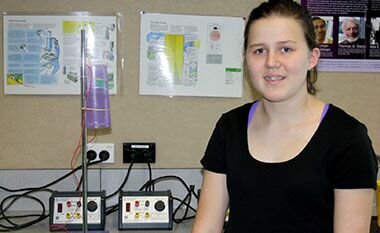
The Impact projects have been an integral part of the curriculum since the school opened in 2009. Deputy Principal Miranda Makin was involved in setting them up and explains it was partly to give students the sorts of skills that governments have recognised as important for growing an innovative and productive economy. The other reason, she says, “is that we believe it’s not if you are bright, but how you are bright. Students work from their strengths and bring their interests and passions from beyond the school and curriculum and explore them within a project framework.”
Students follow the process specified in the Technology curriculum – from developing a brief through to evaluating their outcome – and can work within any one or multiple specialist subjects. They usually work in small groups, reflecting how projects are managed in the workplace. After completing their two-term projects students can focus on a different aspect or start a new project.
Common to all the successful projects
The programme has been tweaked at various stages. Teachers identified that the most 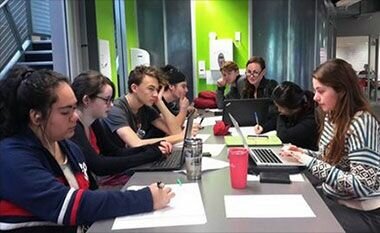 successful projects had four common key principles, and students are directed to include these aspects:
successful projects had four common key principles, and students are directed to include these aspects:
- Student ownership and participation
- Substantial learning beyond the classroom – and students share their knowledge through presentations to their tutorial groups or community groups
- Creating a quality product – which could be a tangible outcome, such as a leaf-blower hovercraft, or developing a programme such as coaching primary students in a sport.
- Links with the community – students are required to participate in or contribute to their community; for example, working at a tertiary institution, developing a product or process for a business, or creating a performance for a local group. Experts also visit the school to share their expertise.
Making links with employers
Facilitating the projects includes developing relationships with local employers. Head of Science Rachel Cann says her first experience of that school/industry link “which I really enjoyed” was at her UK school, when engineers came in and worked on projects with the students. “The Impact Projects are an awesome opportunity for students to get those experiences.” She went on to complete a degree in Electrical and Electronics Engineering specialising in Satellite Communications and worked in this field before completing a Diploma in Teaching.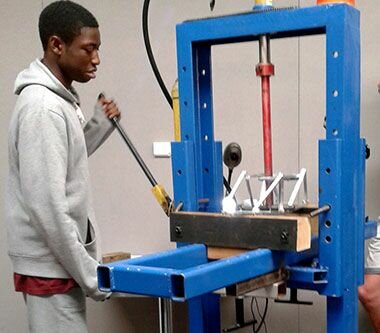
The school has made links with a few engineering employers through parents, but there is scope for much more. “If there were opportunities to have other engineering firms involved, we’d be interested in developing it further.” Rachel says. “Students often don’t know about areas they could explore, so if they were able to see what companies actually do that could spark an interest in them.”
She notes that people working in the industry can help students understand more clearly why they are learning something. “When I took apart a washing machine in a Year 12 Physics class a Futureintech Ambassador from Fisher & Paykel Appliance talked about the electric motors, which was fantastic. The students really enjoyed it and could see those links beyond the textbook and exams.”
Taking advantage of student interest in technology projects
As an Impact Projects team leader Rachel supports teachers from various curriculum areas in their role as project mentors. Teachers help students find opportunities to submit their work as evidence for NCEA assessment or to enter competitions such as Vex Robotics. Students can work on projects run by other organisations or do a Gateway placement, but these activities will just be one part of their project.
Students are often interested in making a physical product – some look online and find things they want to make – which means the Technology and Science rooms are always busy, with groups working on technology-related projects such as skateboards, furniture, clothing, lip balms, software, etc. Allowing students to explore areas that catch their interest can lead naturally into a discussion about engineering and engineering careers. “I talk about the engineering process I used to follow as an engineer,” Rachel says, “and breaking a project into small parts.”
Any engineering employers interested in working with schools in their region are invited to contact Futureintech at .
Influencing students to consider a career in engineering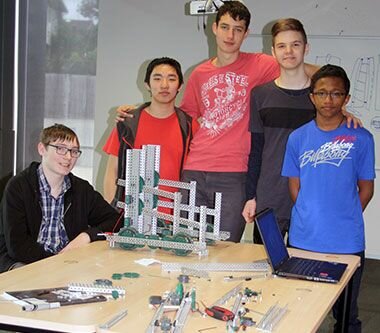
Head student Hannah Cassone is enthusiastic about the “awesome opportunities” the student-driven projects provide, attributing her experience with last year’s project to a change in career pathway from architecture to engineering. Hannah and her team mate completed a Massey University School of Engineering and Advanced Technology first-year paper as part of their project. In response to the course’s Engineers Without Borders (EWB) challenge, they created a ventilation system to help dissipate unhealthy cooking smoke in Nepalese village homes.
This year, Hannah has work experience at engineering firm Aurecon for her project. “Before all of these opportunities,” she says, “I was a really average student. I was told by an engineering student that I wouldn’t succeed because I am a female – I loved proving those people wrong and inspiring others because of it.”
Rachel notes that the success of that first tertiary engineering link sparked an ongoing connection with Massey, “They’ve been amazing, very supportive. When students found out about the EWB challenge some said ‘I’d love to do that’ and this year we have two teams of four students involved.”
A lot of students are unsure about career direction and the projects can confirm, Rachel says, that they do want to pursue a particular field or job. “The teams who have gone through Massey are now thinking about engineering; one was planning a science degree but is now considering the engineering course at Massey.”
Read about Hannah's project
Read Hannah's blog about her engineering pathway
Highlighting engineering pathways

The Impact Projects programme provides another opening for tertiary providers wanting to raise awareness of the various pathways to a career in engineering. Although the school has some links with the University of Auckland’s Faculty of Engineering – where a student is currently working on a project – it doesn’t yet have a relationship with any institutes of technology and polytechnics (ITPs). Establishing a connection – and potentially highlighting the advantages of completing a New Zealand Diploma in Engineering or Bachelor of Engineering Technology – would be a win-win for everybody. The school would be keen to make links with ITPs, Rachel says, and explore any opportunities for how students might work with them on their impact projects.
“The projects are an exciting opportunity for students to explore how they fit into the world,” Miranda says, “and for some can be a transforming experience.”
Read more about the Impact Projects
Our thanks to Miranda and Rachel for their time and advice. If you have any questions, get in touch at
October 2015
 |
 |
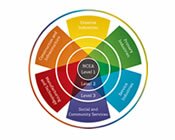 |
||
 |
||||
 |
||||
 |






